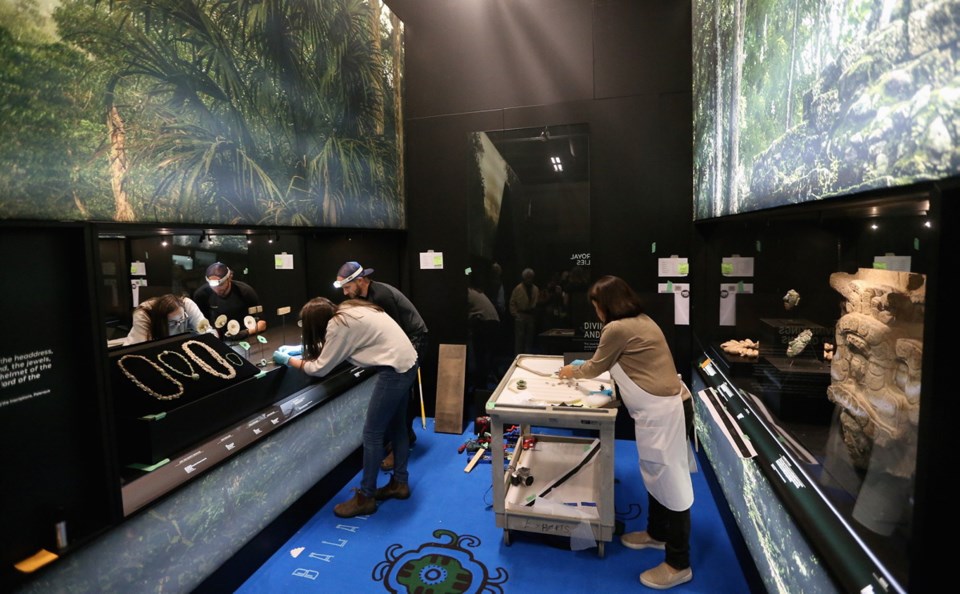Many people believe the culture and languages of what was once the world’s most advanced civilization have died out, but there are more than six million people in Guatemala who continue to practise Maya traditions and speak Maya languages.
That’s the message from Nikolai Grube, a guest curator of an exhibition opening Friday at the Royal B.C. Museum that will display the largest collection of Maya artifacts outside of Guatemala.
Maya: The Great Jaguar Rises is a world première of more than 300 jade, ceramic, stone and textile objects from the Maya culture. Many of the artifacts have never been shown in a museum before.
Grube said the aim of the exhibition is to show visitors how the Maya culture and languages have evolved from their beginnings and continue to survive today.
The exhibition’s artifacts are combined with jungle sounds recorded from Tikal, a major historical site of Mayan civilization, to give visitors an immersive experience to learn about Maya history and how the culture is practised today.
An interactive display features videos of contemporary Mayan people speaking their languages. There are 30 Mayan languages still spoken today in Guatemala and regions of Mexico and Belize.
Grube said the preservation and resiliency of Indigenous languages is a topic that “resonates here in Canada very much.”
The museum is also hosting Our Living Languages, an award-winning exhibition that celebrates the survival of Indigenous languages in B.C.
The objects on display in the Maya exhibit come from La Ruta Maya Foundation, an organization that repatriates cultural artifacts that are donated to Guatemala, and the Museo Nacional de Arqueologia y Etnologia.
The exhibition’s name reflects the importance of the jaguar in Guatemalan and Mayan culture, according to Daniel Aquino, director of the Museo Nacional de Arqueologia y Etnologia in Guatemala. Central America’s biggest and most powerful animal, the jaguar represents the sun in Maya culture.
Aquino said Mayans believe that during the night, the jaguar goes to the underworld and fights to rise again the next day. If the jaguar is defeated during the night, the world will end.
The name also references the Jaguar Man, a piece that depicts a man wearing a mask made of jaguar skin.
The object was sold into the art market before being recovered by La Ruta Maya Foundation in 2013, said Sofia Paredes, director of the foundation.
“This object is a unique piece. There is no comparison to date,” Paredes said.
More than 2,500 Guatemalans live in B.C., according to the 2016 census, and many of them have never had the opportunity to see their own cultural property, Aquino said.
The opening of the exhibition coincides with UNICEF’s International Year of Indigenous Languages.
Maya: The Great Jaguar Rises will be in Victoria until Dec. 31. In 2020, the collection will move to Cincinnati, followed by Edmonton.



